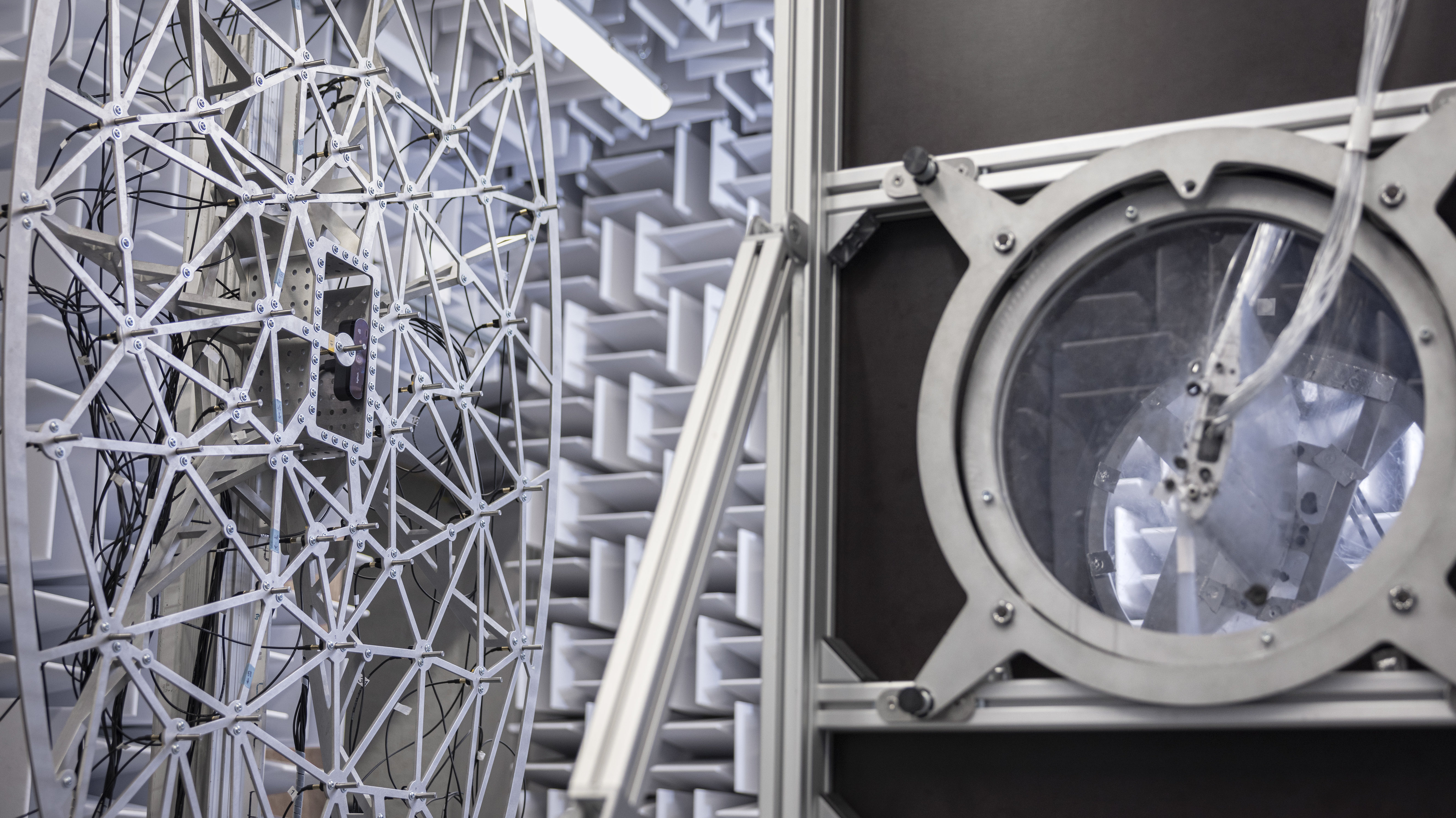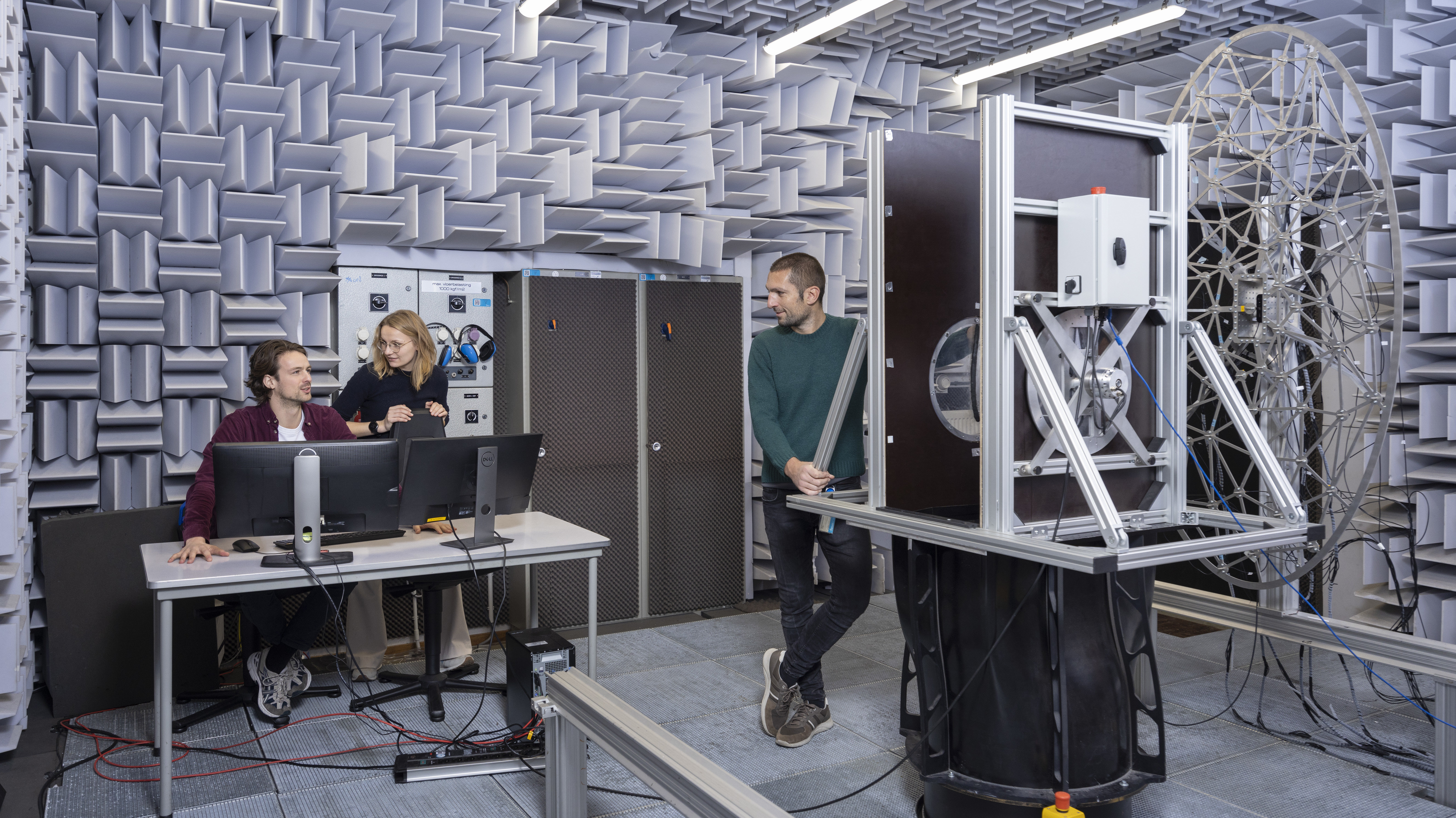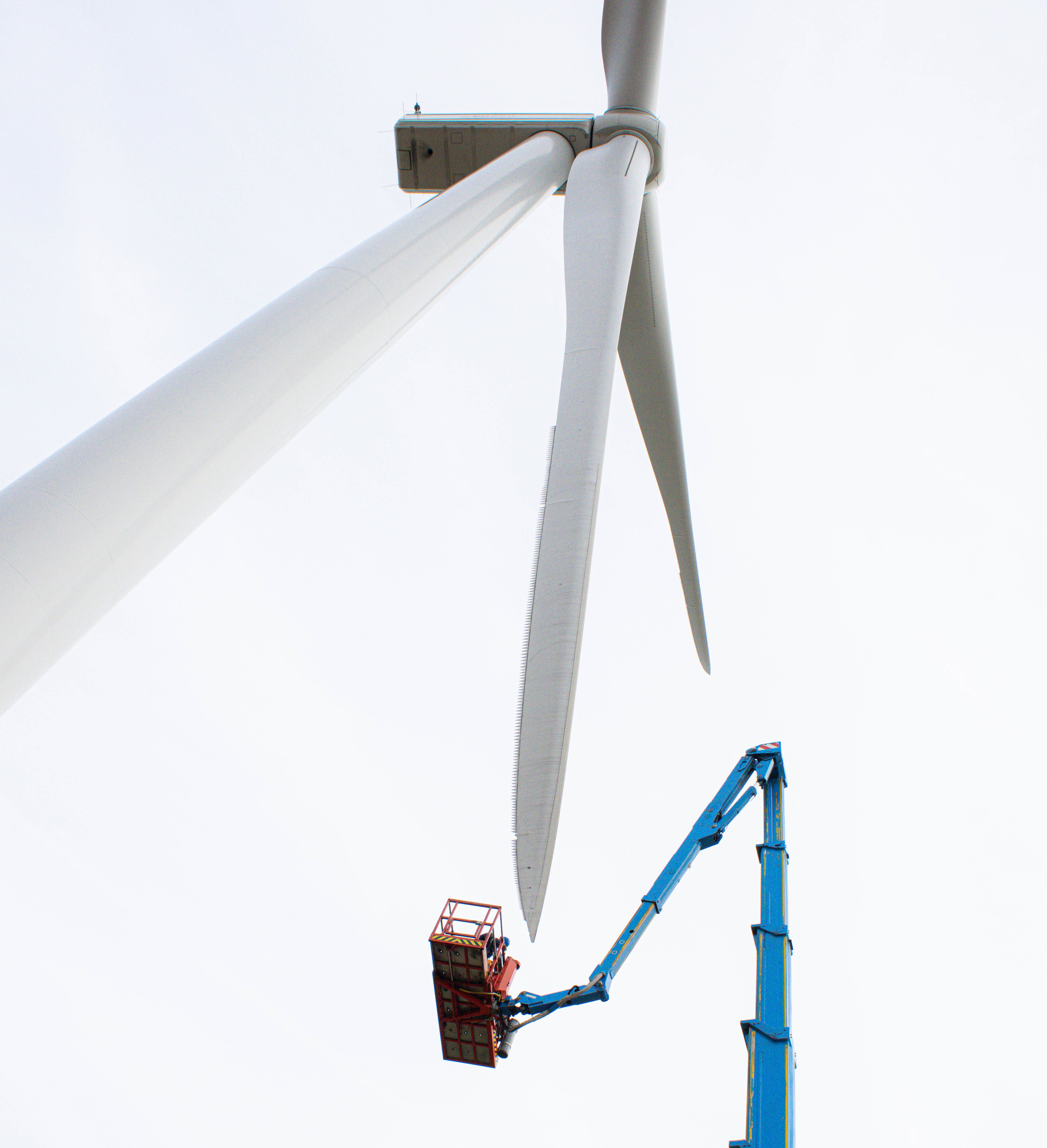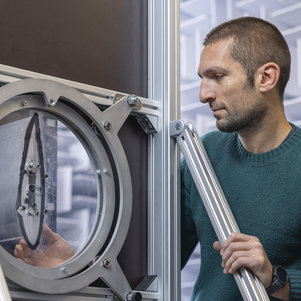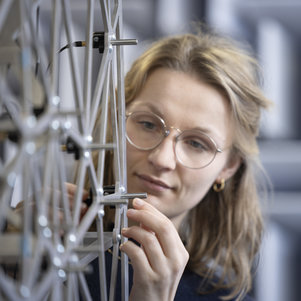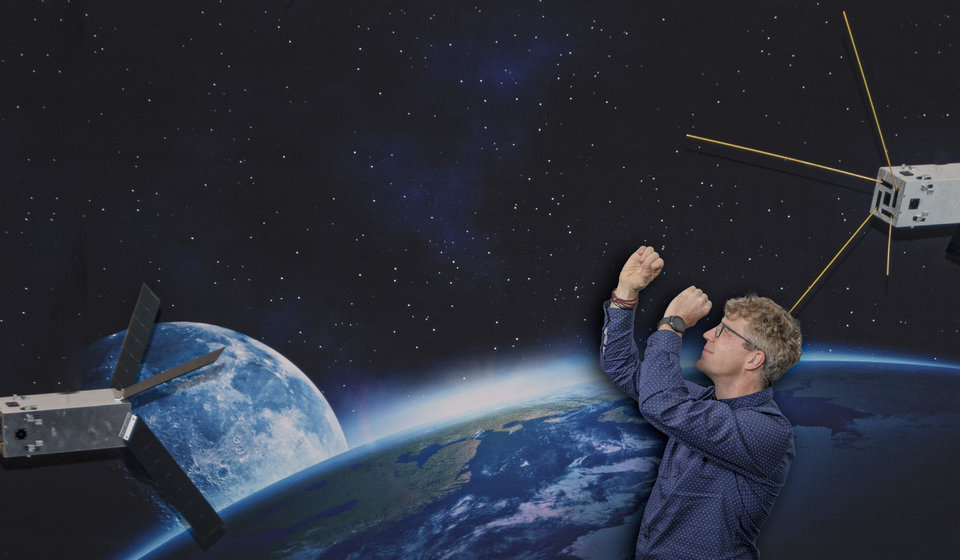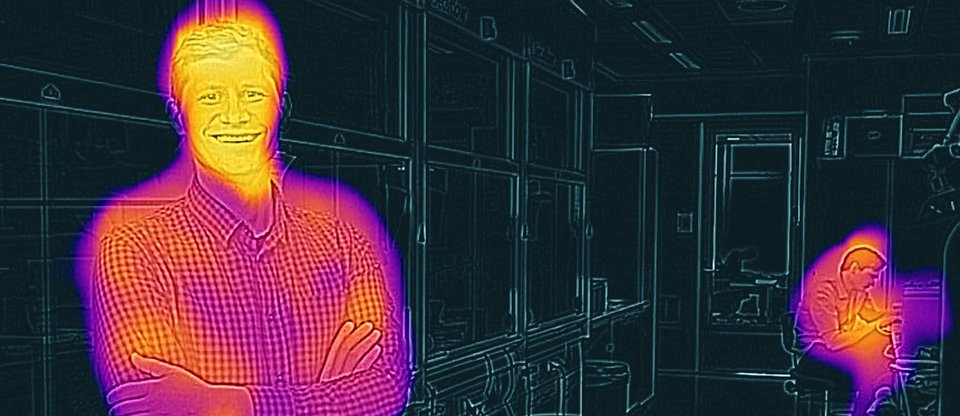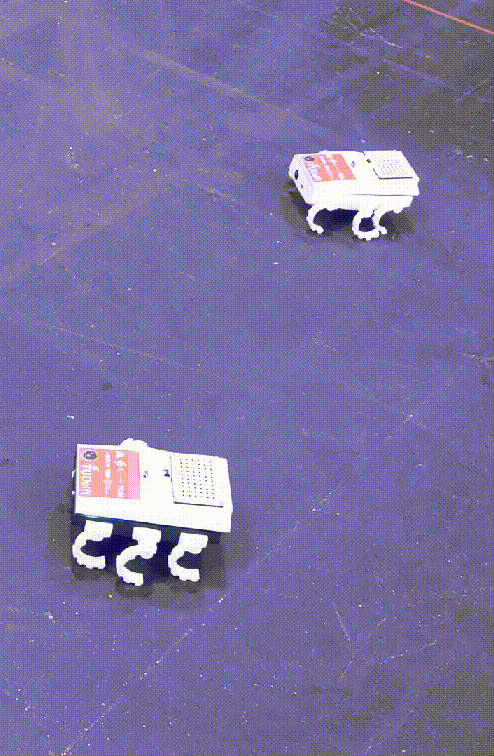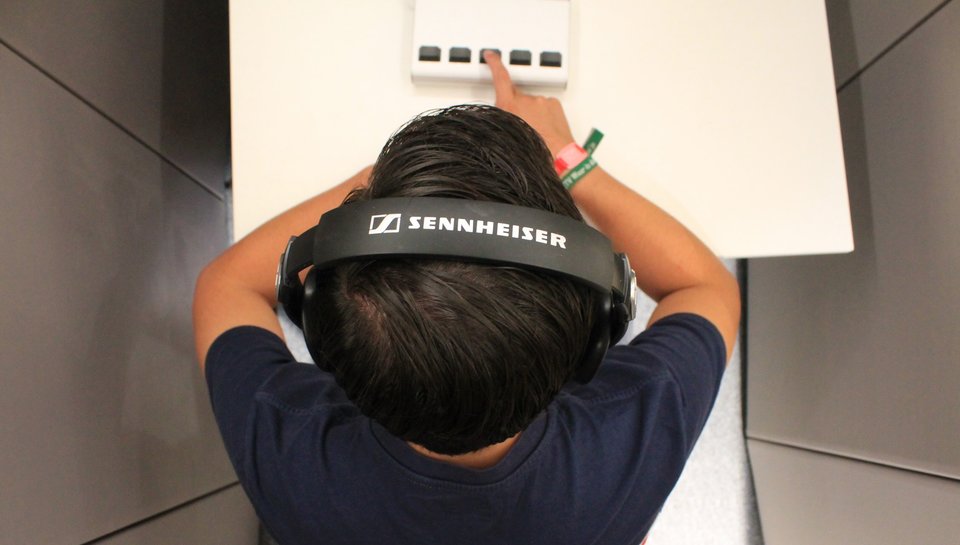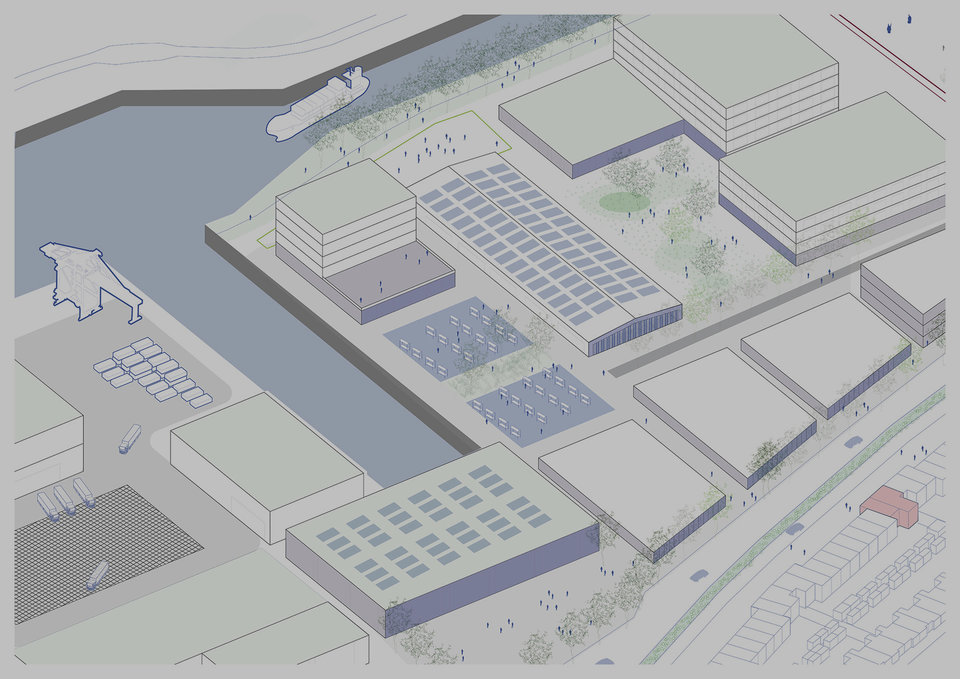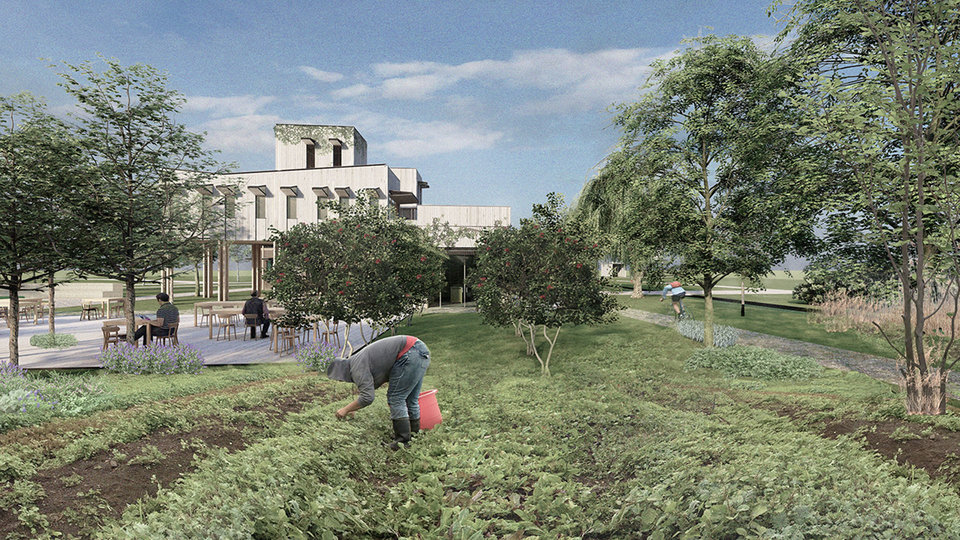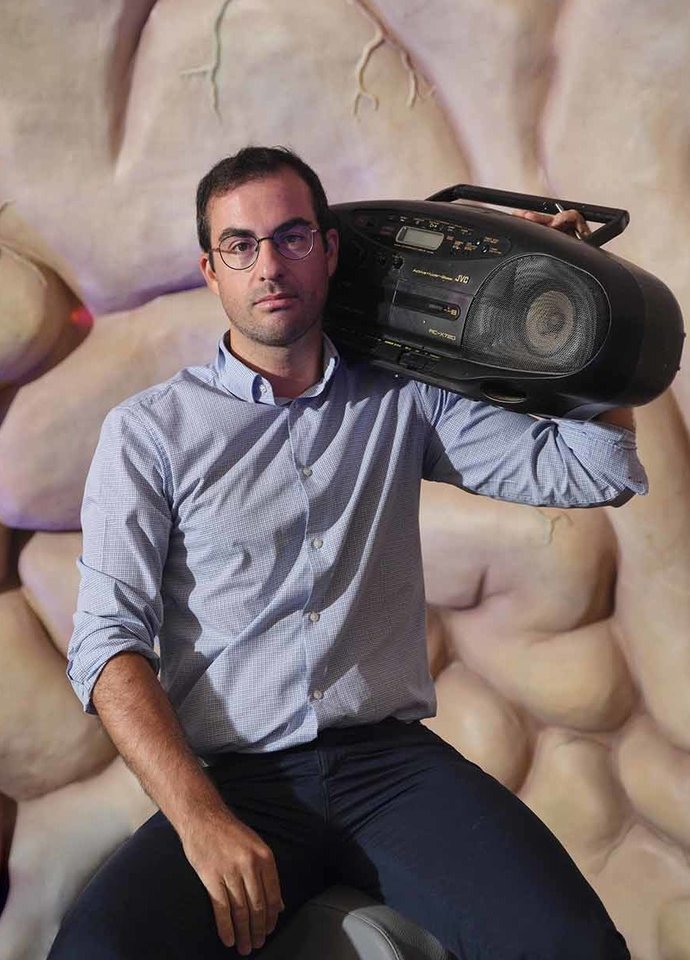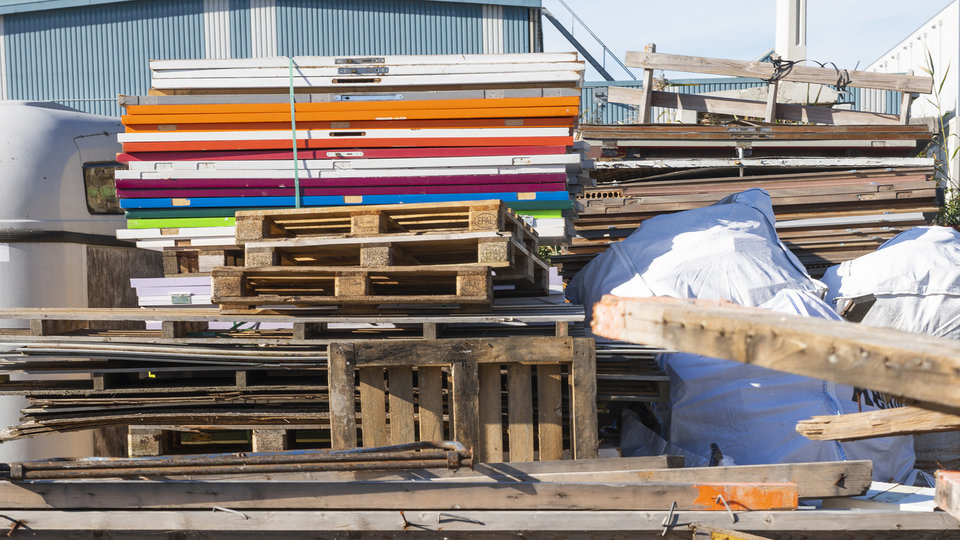Wind turbines provide one of the cleanest forms of energy in the world, but they have an annoying drawback: noise. Researchers and entrepreneurs at TU Delft have come up with a solution they’ve called MuteSkin®. It’s a clever add-on that can be slipped on a wind turbine blade like a flip-flop and that can dramatically reduce the noise it produces. Now the team is about to take this ‘crazy’ idea from the wind tunnels to the wind farms. Daniele Ragni, Bieke von den Hoff, and Friso Hartog explain how they and their colleagues are tackling this, together with industry partners.
April 2nd, 2024
The world needs a lot more wind energy
“What we see is that to fight climate change, governments worldwide are incredibly ambitious when it comes to green energy,” says Daniele Ragni, an aeroacoustics researcher at TU Delft’s Wind Energy department. “The EU, for example, wants as much as 45% of energy to come from renewables in 2030 already.” To reach these targets the world needs a lot more wind energy, but wind turbines have a huge impact on the lives of the people who live near them. Especially noise is a major concern and the building of wind farms on land often leads to heated debate and even polarisation in communities.
In fact, research shows that people find noise from wind turbines particularly annoying compared to other forms of noise pollution due to the repetitive ‘swooshing’ noise they make. The World Health Organisation even recognises noise pollution from wind turbines as an official health problem when exposure levels are too high. That’s why the WHO has issued guidelines on limiting wind turbine noise.
Less noise means more green energy
Ragni: “To protect people from noise pollution, wind turbines in inhabited areas must meet strict noise emission standards. These restrictions, however, also limit the energy produced. Many turbines have to run more quietly at certain times, such as at night, and when that happens they temporarily generate less energy. Also, the restrictions mean less land is suitable for installing wind turbines. Solutions already exist that somewhat reduce wind turbine noise, but there is an urgent need for improvements. With the next-generation add-on we’re developing, we expect to make a real difference and reduce noise pollution enough to solve the problem of production losses.”
Technology with the potential to dramatically reduce noise
Back in 2017, Ragni and fellow researchers started the IPER-MAN project to look for solutions to reduce noise produced by both aircraft and wind turbines. “In both machines, a lot of noise is caused by the airflow over the rear part of the wing or blade, which is called trailing edge noise,” explains Ragni. “In fact, for wind turbines, trailing edge noise is the dominant source. In the IPER-MAN project, we developed an add-on made from a foam-like permeable material that dampens the noise of aircraft wings and wind turbine blades. The immediate potential for onshore wind was huge given the pressing issues of noise and climate change.”
Bringing the technology to life
Given the promise of IPER-MAN, a team of engineering experts and entrepreneurs decided to found a company, MuTech, to bring this technology to wind turbine blades. Friso Hartog, one of the founders of MuTech, explains how the company came about, “I got to know Daniele when some colleagues and I were researching permeable materials. Our focus was on minimising drag rather than reducing noise. However, we noticed a large overlap with the research of Daniele’s team, so we sat down together and decided to start a business. Not only were we able to improve the add-on technically, but we also made it more commercially viable.”
Crossing the valley of death
Despite the promise of the technology, there was still significant risk bringing it to market. As Hartog explains, “Many innovations end up in the ‘valley of death’, the phase when an innovation is no longer interesting enough for further fundamental research, but also not yet ready for commercial application. We reached out to industry partners early on to assess the commercial potential and to determine what further technological development was needed. Wind turbine manufacturers expressed a lot of interest, but it was clear they would not take the risk themselves. So, we dared to take the next step and officially launched MuTech in early 2022 at the Aerospace Innovation Hub.”
A noise-reducing slipper
As research continued, the add-on design began to take shape. The name they gave to their noise-reducing slipper was MuteSkin®. Hartog recounts, “In the first prototype, the permeable material replaced much of the rear part of the blade. After some modifications, we ended up with a kind of slipper that can be attached to the rear of the blade on one side. The advantage of such an add-on is that it can be easily installed during production in the factory, but also applied to existing turbines. Also: it will be easy to replace the add-on in the field with an upgraded version.”
Simulating the real world using wind tunnels
The team conducted a wide range of wind tunnel tests using scale models of MuteSkin® to see what worked and what didn’t. “During these tests, we investigated which parameters influence the performance of MuteSkin®,” explains Hartog, “such as the angle at which to install the add-on on the blade. Based on these insights, we were able to greatly improve the performance and robustness of MuteSkin® compared to the results of the academic research. Last May, we demonstrated the performance of the current model of MuteSkin® for the first time in a full-scale wind tunnel test. That was an exciting moment.”
Conducting the ultimate test – full scale turbines in the field
The full-scale wind tunnel test results gave the team and their partners confidence that MuteSkin® was ready for the ultimate test: full-scale wind turbines in the field. These tests are now made possible by the support of partners such as the energy supplier Eneco, also a participant in the BEST project (see box). Bieke von den Hoff, PhD candidate and Head of Acoustics at MuTech, explains that with these tests, “We want to demonstrate that the product prototype also works in practice. Even if everything goes beautifully in a simulated environment, in the real world you have to deal with interaction effects and unforeseen problems. We hope to reveal these during the field test.”
These tests involve several phases and can be challenging to conduct, especially in stormy and rainy conditions. The first phase of the test consists of wind turbine noise measurements without the add-on. “This will give us an idea of the basic noise level of the wind turbine and its surroundings, and we can study the irregularities in the turbine blades,” says Von den Hoff. “To avoid noise produced by other sources, such as industrial or residential noise, the turbine will need to be located as far away from built-up areas as possible. Then, in the next phase, we will equip one of the blades with MuteSkin®. We will use two methods to measure the noise. The first is the standard certification method, with one microphone placed on the ground. This will allow us to measure the average noise level of the entire wind turbine over a large number of rotations.”
However, to accurately pinpoint the sources of the noise, the team will use another measurement technique, Von den Hoff explains, “It is difficult to identify exactly where the noise is coming from using only a single microphone. So, we developed a new measurement setup that uses no less than 64 microphones. This will allow us to ‘see’ the noise: we can pinpoint the different sources of the noise and compare different blades under the same wind conditions. This is how we directly compare the performance of MuteSkin® to the status quo or other technologies.”However, to accurately pinpoint the sources of the noise, the team will use another measurement technique, Von den Hoff explains, “It is difficult to identify exactly where the noise is coming from using only a single microphone. So, we developed a new measurement setup that uses no less than 64 microphones. This will allow us to ‘see’ the noise: we can pinpoint the different sources of the noise and compare different blades under the same wind conditions. This is how we directly compare the performance of MuteSkin® to the status quo or other technologies.”
Towards a more sustainable and quieter planet
The field tests will validate whether MuteSkin® can achieve the 6 dB noise reduction achieved in wind tunnel tests. Hartog explains what such a reduction would mean in practice, “First of all, of course, it significantly reduces noise pollution in the surrounding area. This is not only healthier, but it can also help increase public support for the role of onshore wind in the green energy transition. Furthermore, use of this new technology can increase power production of existing wind turbines with up to 15%. And there will be roughly double the amount of land area available to install these quieter wind turbines. All this will result in a huge increase in production of cheap, carbon-free electricity.”
For Hartog it is especially wonderful that MuteSkin® - a ‘crazy’ idea as he calls it - has made its way so far from fundamental research towards real-world application. “It may seem an obvious transition, but it actually is not. The fact that we are crossing the ‘valley of death’ with a small and dedicated team is really a major achievement. I also love the way this solution contributes to solving a social problem, both in terms of health benefits and sustainable energy generation. This innovation is a great example of what TU Delft stands for: ‘impact for a better society and pioneering for change’. In our case, it’s a path to a more sustainable and quieter planet.”
The BEST project
TU Delft and MuTech are testing MuteSkin® in the BEST (Blade Extensions for Silent Turbines) project. Other participants in the BEST project are TNO, German wind turbine manufacturer Nordex, energy supplier Eneco, MundoNovo Sound Research and the Deltawind Cooperation. The project is partly funded by a renewable energy transition grant from the Netherlands Enterprise Agency (project HER+22-02-03415120).


